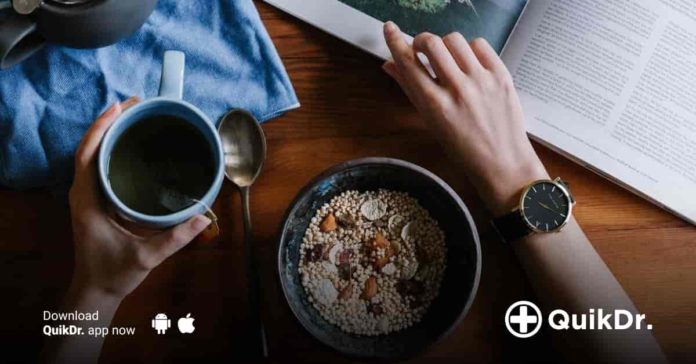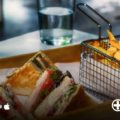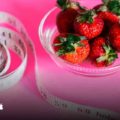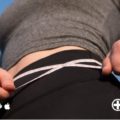Your diet plays a vital role when it comes to losing weight. Although workouts are also important, what you eat makes sure that your efforts at the gym don’t go futile. Low carb diets such as ketogenic diet have gained the attraction for promising rapid weight loss and curbing hunger pangs. This type of diet involves replacing carbohydrates with fats as the prime source of energy in the human body. Read on to know how a superb keto diet plan for weight loss works.
Table of Contents:
- What is a Ketogenic Diet?
- Benefits of Keto Diet
- Keto Diet Plan For Weight Loss – Does it Work?
- Foods to Eat on a Keto Diet Plan
- Foods to Avoid on a Keto Diet Plan
- Keto Diet Tips
- Side Effects of Keto Diet
What is a Ketogenic Diet?
Ketogenic diet or keto diet is a term for a low-carb diet that helps you get more calories from fat (60% to 70%), moderate from protein (15% to 30%) and less from carbohydrates (5% to 10%). Usually, carbohydrates and proteins get converted into glucose. But in this case, the body is deprived of both carbohydrates as well as proteins and therefore, your body has no choice but to utilize the fat as the energy source.
Due to this, the body produces ketone molecules in your liver for energy and goes into a state of ketosis.
Benefits of Keto Diet
- Reduces weight
- Manages diabetes
- Higher energy levels
- Healthy liver
- Reduces LDL levels
- Treats brain disorders
- Lowers blood pressure
- Reduces the risk of heart diseases
Keto Diet Plan For Weight Loss – Does it Work?
Yes! Keto diet plan for weight loss really does work. It helps you lose fat, preserve muscle fat, and improves your health condition. A keto diet is much more effective than a regular low-fat diet for weight loss.
Here is how following a keto diet plan promotes weight loss:
- It helps you feel full and reduces the production of hunger-stimulating hormones such as leptin and ghrelin.
- Drastically improves insulin sensitivity which may help to improve metabolism as well as fuel utilization.
- It reduces lipogenesis, a process that helps in converting sugar into fat. When you take in a limited amount of carbohydrates, fat is used for energy.
Foods to Eat on a Keto Diet Plan
Here is a list of 9 healthy foods that you can eat on a keto diet plan
1. Meat and egg
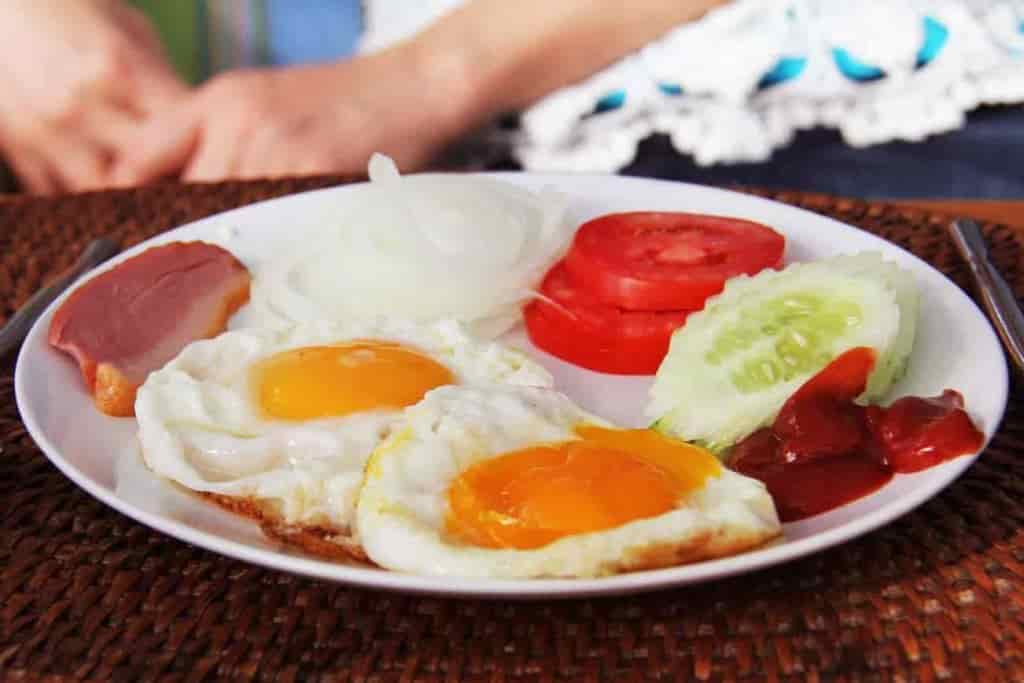
Eat unprocessed meats as they are low-carb and keto-friendly. It is always best to choose organic and grass-fed meat because animals that eat grass produce meat with higher amounts of antioxidants, omega-3 fatty acids, and conjugated linoleic acid than meat from grain-fed animals.
Always keep in mind that keto is a higher-fat diet, so there is no need to take in huge amounts of protein. Excess protein in your body can be converted into glucose which makes it harder for some people to get into the process of ketosis, especially for those with higher levels of insulin resistance.
On a keto diet, you can eat organic and pastured eggs in any way you want, for example, scrambled, boiled, fried in butter, or as omelettes.
2. Avocado
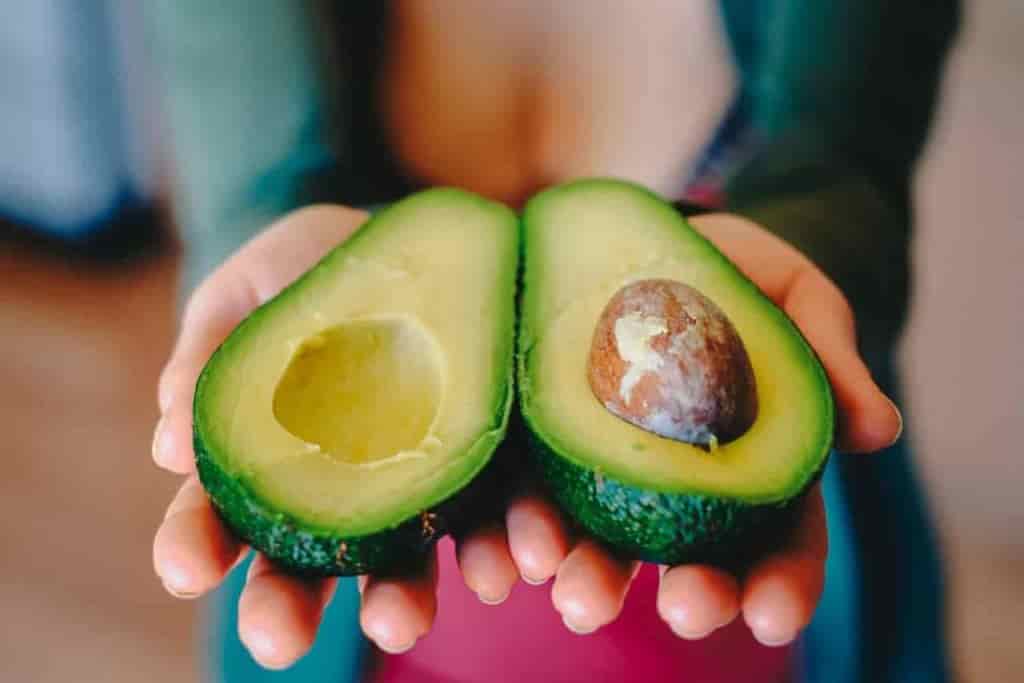
The high content heart-healthy monounsaturated fatty acids (MUFAs) in avocado makes it a great food to include in your keto diet plan for weight loss. They are also loaded with fibers that improve digestive health.
Half an avocado consists of 15 g fat, 9 g carbs, 7 g fiber, and 2 g of protein.
In addition, avocados are also high in potassium, a key mineral that may help make the transition towards a ketogenic diet.
3. Cheese
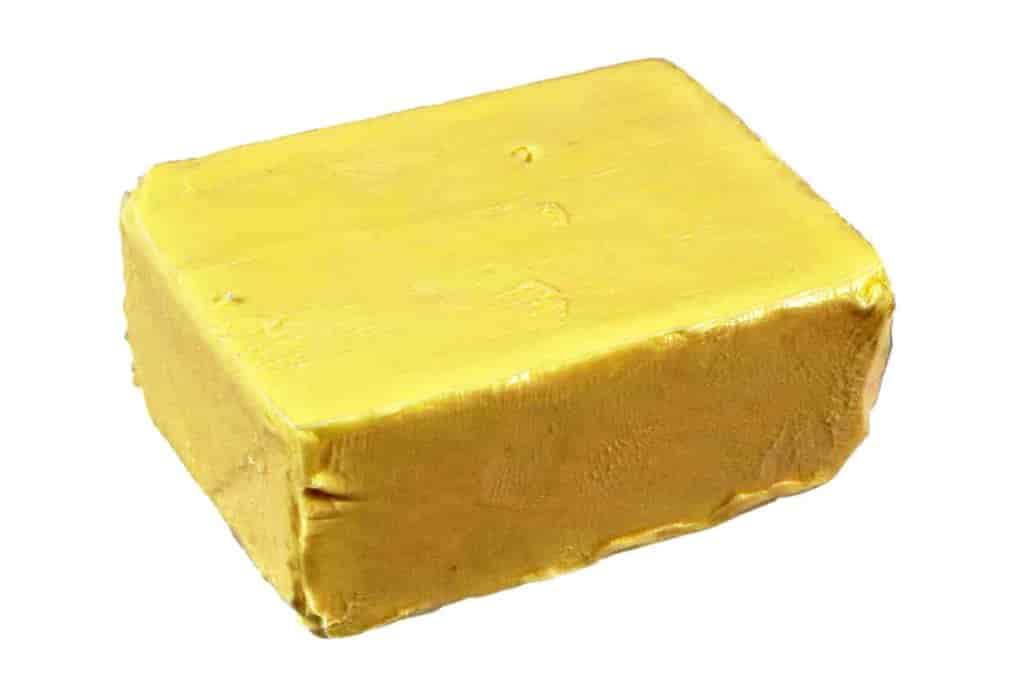
Even though there are many types of cheese, most of them are very low in carbs and high in fat, making them the best fit for a ketogenic diet. Cheese adds flavour, texture, and varieties into your meals. It contains conjugated linoleic acid, a fat that can aid fat loss and improve body compositions. Also, regular intake of cheese may help you reduce the loss of muscle mass as well as the strength that occurs with aging.
High-quality, grass-fed, and full-fat cheese are always best for a keto diet.
4. Butter
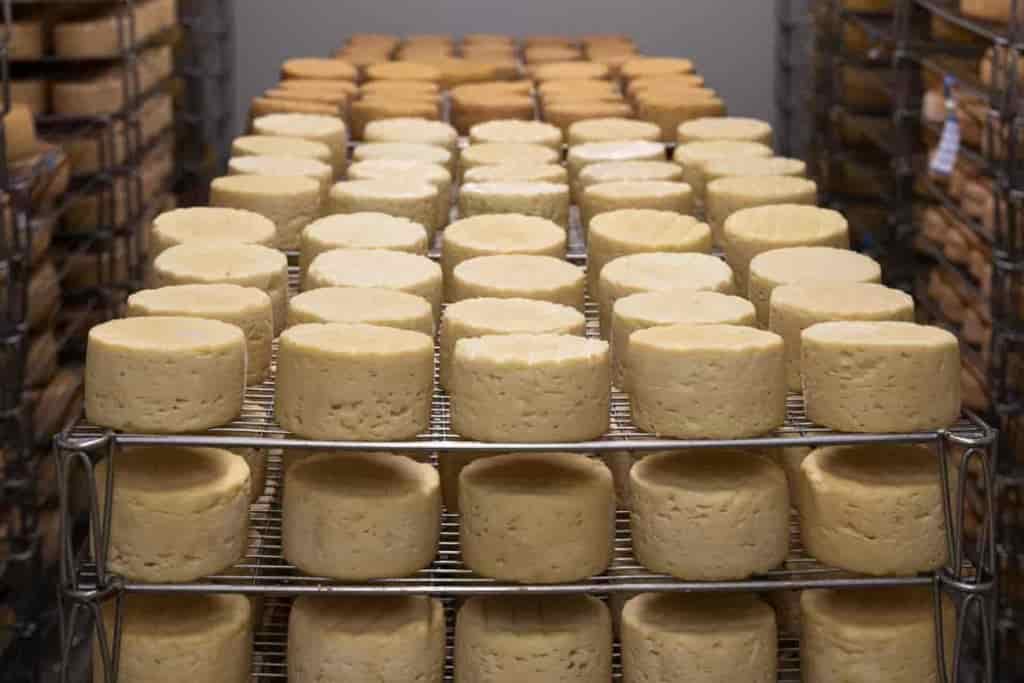
Butter, especially grass-fed, contains only trace amounts of carbs per serving and is high in fats.
It is rich in conjugated linoleic acid, the fatty acid that helps to shed extra fat. Grass-fed butter contains 5 times more conjugated linoleic acid than butter from grain-fed cows. They are also a great source of omega-3 fatty acids and vitamin K2.
5. Seafood
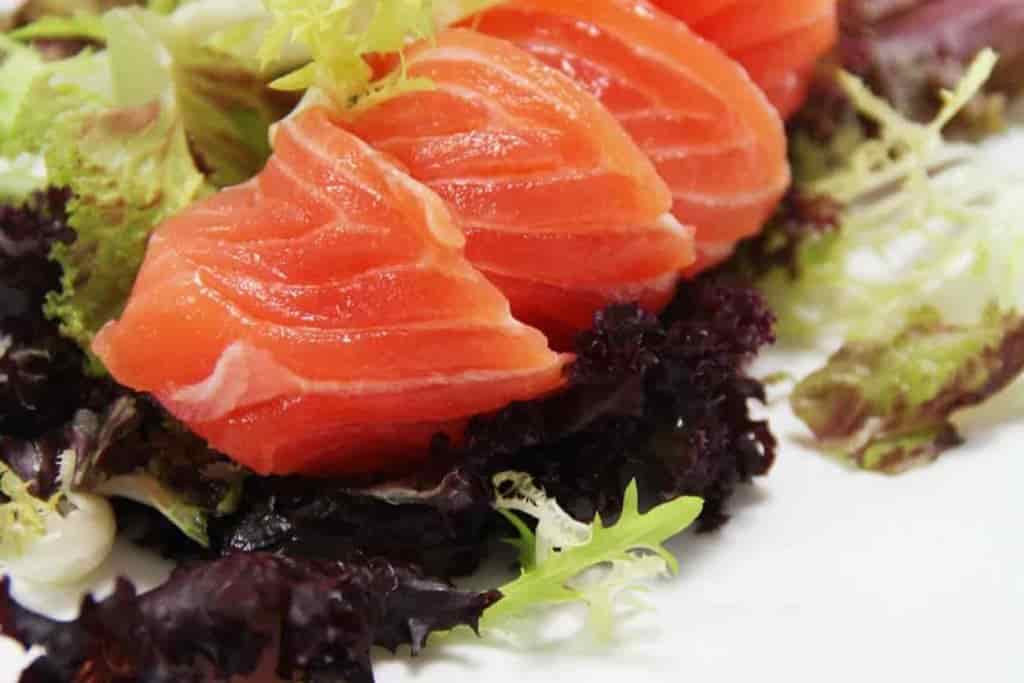
Seafoods are mostly carb-free or very low in carbs.
Shellfish and fatty fish are among the best keto-friendly foods. Fatty fishes, including salmons and sardines, are rich in omega-3 fatty acids, selenium, and vitamin B12. They help in lowering the insulin levels and also increases insulin sensitivity in people who are overweight and obese.
Among shellfish, shrimp, crab, lobster, squids, mussels, oysters, are all great for a keto diet.
6. Low-carb vegetables
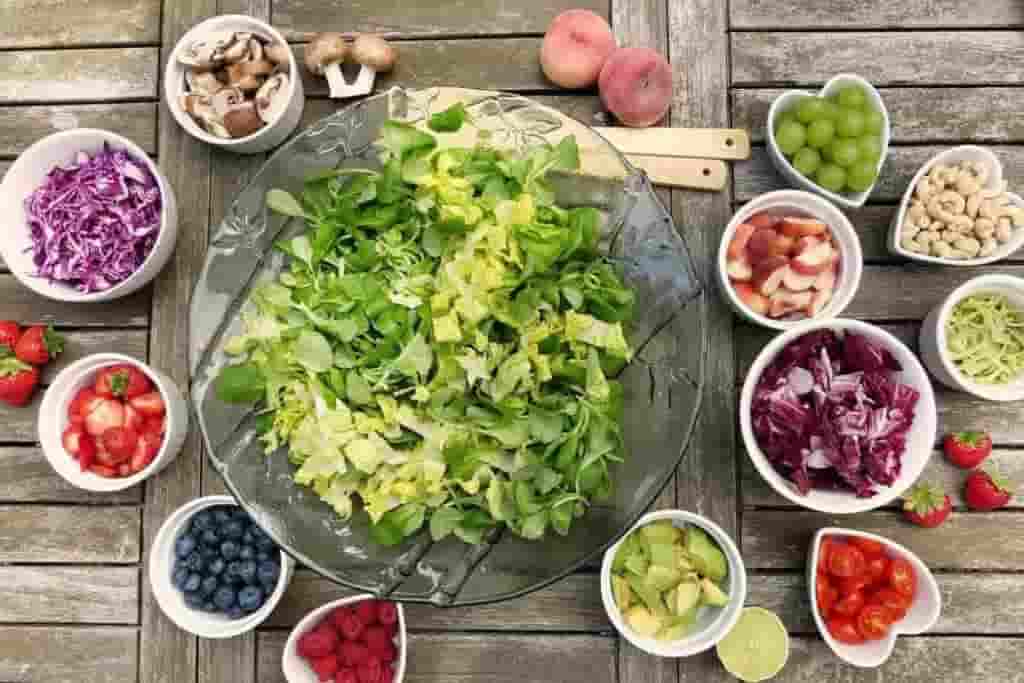
The best type of veggies for a keto-friendly diet are both high in nutrients and low in carbs. These includes:
- Broccoli
- Lettuce
- Asparagus
- Zucchini
- Spinach
- Cucumber
- Cauliflower
- Mushroom
- Kale
- Cabbage
7. Nuts and seeds
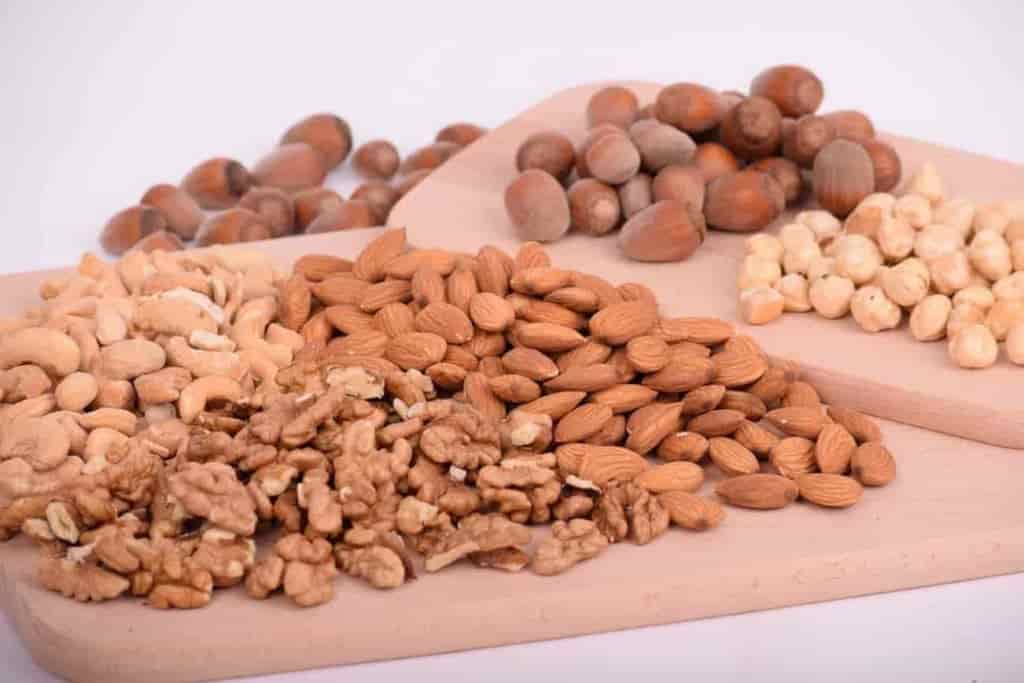
Nuts and seeds are versatile options to add on when you are following a low-carb, high-fat diet such as the keto diet. They are an excellent source of healthy fats, vitamins, fibers, minerals, and antioxidants.
Here are some of the best nuts and seeds that you should consider adding to your keto lifestyle.
Foods to Avoid on a Keto Diet Plan
- Brazil nuts
- Chia seeds
- Sesame seeds
- Flax seeds
- Hazelnuts
- Peanuts
- Almonds
- Sunflower seeds
Here is a list of foods that you should avoid when you are on a keto diet.
1. Grains
Grains are filled with carbs. Therefore, it may act negatively on your keto progress. It is always best to avoid grains, especially the ones listed below:
- Oats
- Rye
- Wheat
- Corn
- Rice
- Barley
- Quinoa
- Flour
- Buckwheat
2. Vegetables
Avoid vegetables having high-starch content. This includes:
- Potato (including sweet potatoes and baked potatoes)
- Parsnip
- Yams
- Artichoke
- Cassava
3. Legumes
Legumes such as beans, peas, and lentils are high carbs and therefore should be avoided on a ketogenic diet.
4. Fruits
When you are on a keto diet, go for low glycemic fruits like strawberries, raspberries, blueberries and blackberries. It is always best to avoid fruits that are high in sugar and carbs, such as:
- Orange
- Pineapple
- Pear
- Apple
- Mango
- Peach
- Tangerines
- Dried fruits
- Grapes
Also, avoid fruit juices (excluding lemon) as well as frozen fruits as they tend to have higher carb counts.
5. Dairy
Even though dairy belongs to the low carb food group, it does contain carbs. Therefore, make sure that you limit your dairy intake to not more than 3-4 ounces per day.
It is always better to avoid milk as it is higher in carbs and low in fat. Also, avoid condensed milk, fat-free or low-fat yoghurt, and creamed cottage cheese.
Keto Diet Tips – Things To Remember
Here are some essential tips that will help you on your keto journey:
Prioritize your sleep
Poor sleep habits can trigger your stress hormones thereby preventing you from getting into fat-burning mode. Make sure to sleep at least 8 hours a day.
If you find it difficult to sleep well at night, read our article: Home Remedies For a Better Night’s Sleep
Exercise regularly
Maintaining a regular exercise schedule while you are following the keto diet will help in boosting ketone levels. To get into ketosis, your body should get rid of the glucose present in the body.
When you are exercising, your body uses different types of energy for fuel such as fats, carbohydrates and amino acids. The more frequently you exercise, the faster your body depletes glycogen. Once your body gets rid of its glycogen storages fully, it will seek out other forms of fuel and will then turn to fat for energy through the process of ketosis.
Incorporate both high-intensity exercises in conjunction with low-intensity steady-state exercises. This will help in balancing your blood sugar levels and aids your body in entering ketosis. You can also focus on doing belly fat reduction exercises.
Stay hydrated
Drinking plenty of fluids with electrolytes is very much important when you are on a diet, especially when you are following a keto diet. Keep a water bottle around your bed, sofa, table or any other place you are in.
Add more salt to your diet
When you are on a low carb, high-fat diet such as the keto diet, insulin levels will be much lower, and your body excretes comparatively more salt since there are no carbs present to spike up insulin and hold onto the sodium.
If you are someone with a health condition such as high blood pressure, seek medical advice before you think of adding extra salt.
- Reduce stress and stay calm
Stress can severely hinder your body’s ability to enter the ketosis stage. This is because the stress hormone known as cortisol will elevate your blood sugar levels, thereby preventing your body from burning fats for energy. To overcome this condition you can try doing yoga for anxiety and depression.
If you are going through a stressful period right now, then starting a keto diet may not be a good option for you.
Side Effects of Keto Diet
Here is how keto diet affects you:
- Keto-flu
This is a condition that happens when you start following a keto-diet. It is the result of your body slowly adapting to a low-carb state. Symptoms of keto-flu include headache, dizziness, nausea, vomiting, irritability, and constipation. But, for most people, these symptoms last only for a week.
- Kidney damage
When you are on a keto diet, there is an increased loss of electrolytes such as magnesium, potassium and sodium. This increases the risk of acute kidney diseases.
Other side effects:
- Vitamin deficiency
- Muscle loss
- Irregular menstrual cycles
- Decreased bone density
- Anxiety
- Frequent urination
- Hair loss
- Bad breath
A strict diet like keto is not safe for those who are unhealthy or have any conditions involving their liver, gallbladder, thyroid, or pancreases. However, it is always best to talk to a doctor and make sure that you are safe before you start following a keto diet plan for weight loss.


